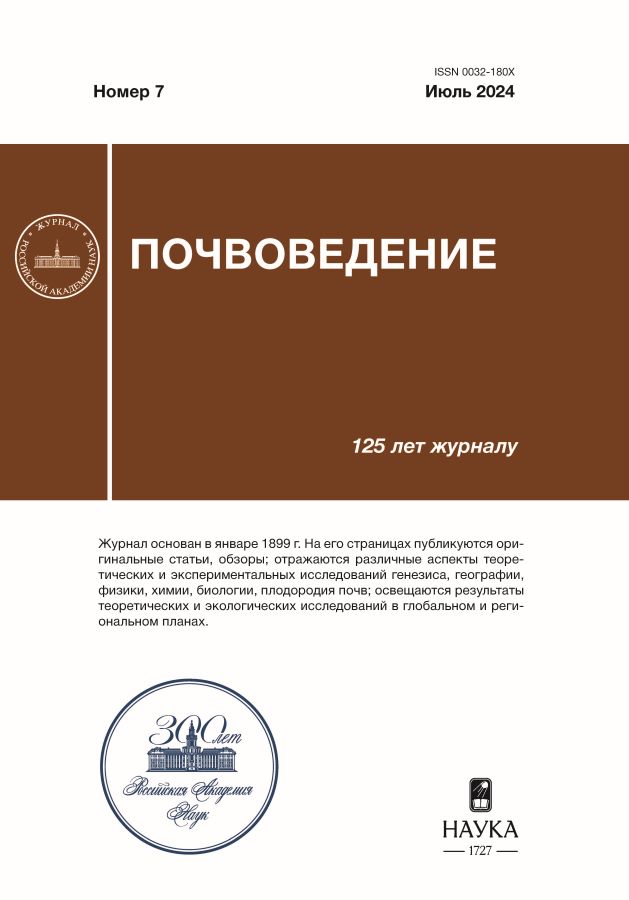Chemical Structure of Organic Matter of Water-stable Macroaggregates of Agrochernozems of Different Positions on the Slope
- 作者: Artemyeva Z.S.1, Kolyagin Y.G.2, Zasukhina E.S.3, Tsomaeva E.V.1, Yaroslavtseva N.V.1, Kogut B.M.1
-
隶属关系:
- Dokuchaev Soil Science Institute
- Lomonosov Moscow State University
- Federal Research Center “Computer Science and Control” of the RAS
- 期: 编号 7 (2024)
- 页面: 983-996
- 栏目: SOIL CHEMISTRY
- URL: https://kld-journal.fedlab.ru/0032-180X/article/view/666619
- DOI: https://doi.org/10.31857/S0032180X24070055
- EDN: https://elibrary.ru/XVEPLJ
- ID: 666619
如何引用文章
详细
The chemical structure of pools of organic matter (OM) in the 2–1 mm water-stable macroaggregates, isolated from air-dry aggregates of the same size in arable horizons of non-eroded, eroded and deposited agrochernozems has been studied by solid-state 13C-NMR spectroscopy. An assessment is made of the alteration of their chemical structure in the denudative-accumulative landscape. It was revealed that the overwhelming majority of water-stable macroaggregates in the erosion zone are newly formed due to the dynamic replacement of OM in situ, which is clearly evidenced by the integral indicators of the chemical structure of all pools of OM macroaggregates. Analytical data indicate the predominant transport of newly formed macroaggregates. The destruction of macroaggregates during the transport phase is accompanied by the release of previously physically protected aggregated OM, which undergoes partial mineralization (predominantly its most labile part – hydrolyzable), and its stable part remains little/non-changed. Mineral-associated OM (Сlay and Residue) changes little, maintaining relative freshness, which may be indirect evidence of the transportation of predominantly newly formed macroaggregates from the erosion zone. The greater degree of freshness of free OM of macroaggregates in deposited agrochernozem is due to the predominance in of fresh remains of cultivated vegetation of the accumulative zone, together with those transported from the erosion zone.
作者简介
Z. Artemyeva
Dokuchaev Soil Science Institute
编辑信件的主要联系方式.
Email: artemyevazs@mail.ru
俄罗斯联邦, Moscow
Yu. Kolyagin
Lomonosov Moscow State University
Email: artemyevazs@mail.ru
俄罗斯联邦, Moscow
E. Zasukhina
Federal Research Center “Computer Science and Control” of the RAS
Email: artemyevazs@mail.ru
俄罗斯联邦, Moscow
E. Tsomaeva
Dokuchaev Soil Science Institute
Email: artemyevazs@mail.ru
俄罗斯联邦, Moscow
N. Yaroslavtseva
Dokuchaev Soil Science Institute
Email: artemyevazs@mail.ru
俄罗斯联邦, Moscow
B. Kogut
Dokuchaev Soil Science Institute
Email: artemyevazs@mail.ru
俄罗斯联邦, Moscow
参考
补充文件











